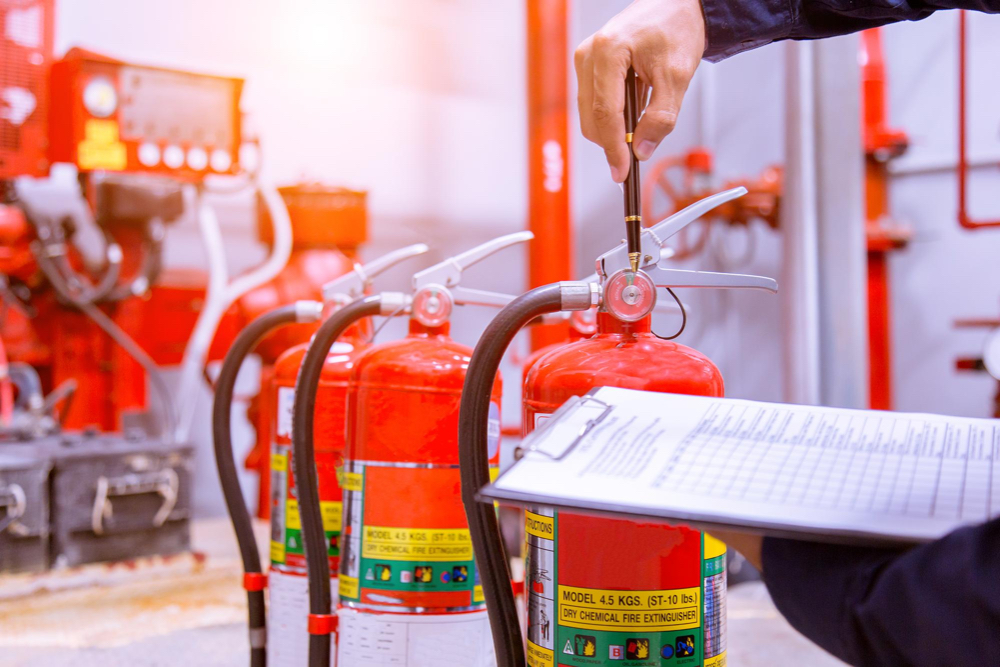Fire life safety standards have evolved dramatically over the centuries, driven by technological advancements, catastrophic events, and a growing understanding of fire behaviour.
These standards are crucial for safeguarding lives, property, and the environment. This comprehensive guide explores the historical perspective, early standardization efforts, modern fire safety standards, global impact and harmonization, and emerging trends shaping the future of fire safety.
Historical Perspective
Fire safety has been a concern for human societies since ancient times. The earliest recorded fire safety measures date back to ancient Rome, where the Emperor Augustus established the Vigiles, a corps of firefighters and watchmen. These early efforts were primarily reactive, focusing on firefighting rather than prevention.
The Great Fire of London in 1666 marked a pivotal moment in fire safety history. This devastating blaze, which destroyed much of the city, highlighted the need for better fire prevention measures. In its aftermath, building regulations were introduced to prevent such disasters, including requirements for fire-resistant building materials and wider streets to act as firebreaks.
Early Standardization Efforts
The industrial revolution brought about significant changes in building construction and urban development, leading to an increased risk of fires. In response, the 19th and early 20th centuries saw the establishment of some of the first standardized fire codes and regulations. One of the earliest examples is the London Building Act of 1844, which mandated the use of non-combustible materials for construction in certain areas of the city.
In the United States, the National Fire Protection Association (NFPA) was founded in 1896, setting the stage for systematic development of fire safety standards. The NFPA’s early work focused on electrical safety and the development of the National Electrical Code (NEC), which aimed to reduce the risk of electrical fires. This marked the beginning of comprehensive fire safety standardization efforts, which would expand to cover a wide range of fire safety issues.
Modern Fire Safety Standards
Today, fire safety standards are comprehensive, covering various aspects of fire prevention, detection, and suppression. Modern fire safety standards are developed through rigorous research, testing, and collaboration among experts in fire science, engineering, and public safety.
Fire Prevention
Fire prevention standards focus on minimizing the risk of fire ignition and include regulations on the storage and handling of flammable materials, requirements for fire-resistant building materials, and guidelines for safe electrical installations. For instance, the International Building Code (IBC) and the NFPA 101: Life Safety Code provide detailed requirements for building design and construction to enhance fire safety.
Fire Detection and Alarm Systems
Early detection of fires is crucial for minimizing damage and saving lives. Modern fire safety standards mandate the installation of smoke detectors, heat detectors, and alarm systems in residential, commercial, and industrial buildings. The NFPA 72: National Fire Alarm and Signaling Code sets the standard for the installation, performance, and maintenance of fire detection and alarm systems.
Fire Suppression
Fire suppression standards address the systems and equipment used to extinguish fires, such as sprinklers, fire extinguishers, and standpipe systems. The NFPA 13: Standard for the Installation of Sprinkler Systems is one of the most widely adopted standards, providing guidelines for the design and installation of automatic sprinkler systems to ensure they function effectively during a fire.
Global Impact and Harmonization
Fire safety is a global concern, and harmonizing fire safety standards across different countries is crucial for ensuring consistent protection worldwide. Various international organizations, such as the International Organization for Standardization (ISO) and the International Electrotechnical Commission (IEC), work towards developing and harmonizing fire safety standards.
The ISO 23932-1: Fire Safety Engineering is an example of an international standard that provides a framework for developing fire safety engineering solutions that can be applied globally. This standard helps bridge the gap between different national regulations, promoting a unified approach to fire safety.
Harmonization efforts also extend to regional levels. In the European Union, the Construction Products Regulation (CPR) ensures that building materials meet harmonized standards for fire safety, allowing for the free movement of construction products within the EU while maintaining high safety standards.
Emerging Trends and Future Directions
As technology and society continue to evolve, so too do fire safety standards. Several emerging trends are shaping the future of fire life safety, promising to enhance protection and efficiency.
Smart Fire Safety Systems
The integration of smart technology into fire safety systems is revolutionizing the field. Smart detectors, alarms, and suppression systems can communicate with each other and with building management systems to provide real-time monitoring and response. These systems can automatically adjust ventilation, unlock exits, and guide occupants to safety during a fire, significantly improving response times and outcomes.
Sustainable Fire Safety Solutions
Sustainability is becoming a key consideration in fire safety. The development of eco-friendly fire retardants and sustainable building materials that offer fire resistance without harmful environmental impacts is gaining traction. Additionally, fire safety standards are increasingly incorporating guidelines for the sustainable design and operation of fire protection systems.
Performance-Based Codes
Traditional fire safety codes are prescriptive, specifying exact requirements for materials, systems, and practices. However, performance-based codes, which focus on achieving specific safety outcomes rather than prescribing methods, are gaining popularity. These codes provide greater flexibility in design and innovation while ensuring that safety objectives are met.
Enhanced Firefighter Safety
Protecting firefighters is a critical aspect of fire safety. Advances in personal protective equipment (PPE), such as heat-resistant fabrics and breathable gear, are improving firefighter safety and performance. Additionally, standards for firefighter training and safety protocols continue to evolve, incorporating the latest research and technology.
The evolution of fire life safety standards reflects humanity’s ongoing efforts to protect lives and property from the devastating effects of fire. From the early days of reactive firefighting measures to the sophisticated, technology-driven standards of today, fire safety has come a long way. As we look to the future, continued innovation, harmonization, and a commitment to sustainability will shape the next generation of fire safety standards, ensuring that we are better prepared to prevent and respond to fires in an ever-changing world.

